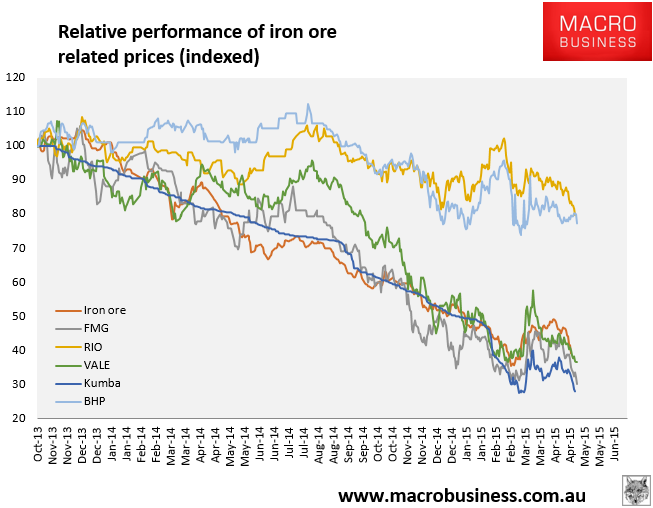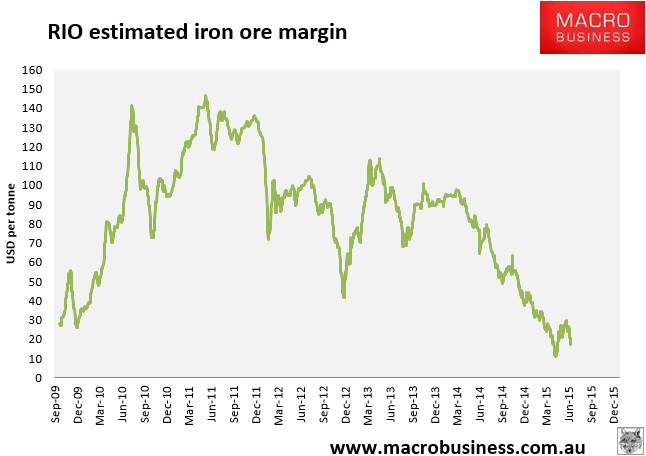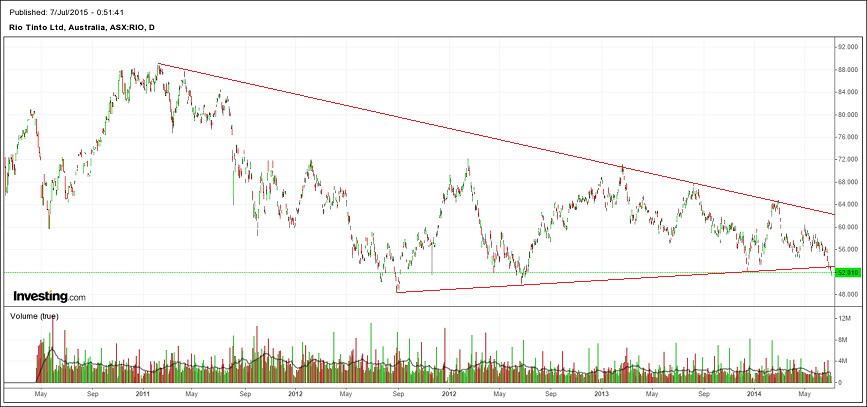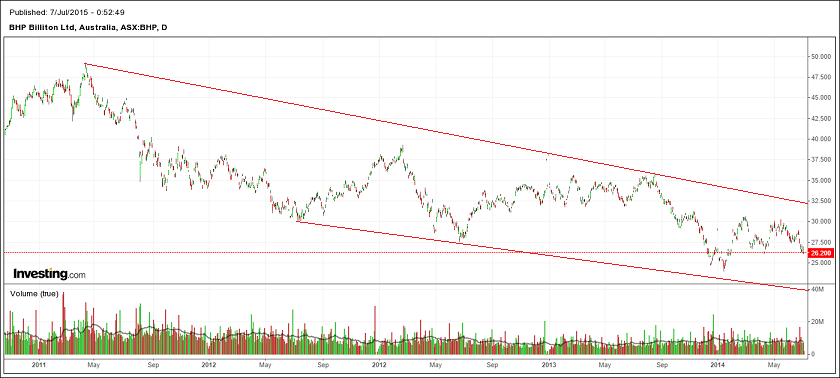Always looking backwards, the AFR has story today on the travails of the junior iron ore sector:
What do you cut when there isn’t much left to cut? That’s the question facing Australia’s smaller iron ore miners this morning after the spot price in China tumbled another 5.4 per cent overnight to just $US52.28.
…Estimates of breakevens from UBS show there is little room to move. UBS puts the breakeven of BC Iron at $US52 a tonne, while struggling steel group Arrium, which also mines iron ore, has a breakeven of $US51 a tonne
Mount Gibson Iron’s break-even price is estimated to be around $US49 a tonne, with Grange Resources’ pegged at $US48 a tonne. Gina Rinehart’s Roy Hill, which expects to ship its first ore in September, has an assumed break-even price of $US41 a tonne, while UBS has Fortescue Metals Group at $US44 a tonne – although the company says it can get this below $US40.
Old news that! The juniors have been dead men walking all year, including poor Atlas and it’s Borgesian rescuicide. Though they’re still at it, from the SMH:
Australia’s struggling iron ore juniors are hitting back over the brave new normal in prices that threatens to crush their businesses by running push polling in the heartland of Western Australia against BHP Billiton and Rio Tinto.
Residents are asked in random robo-polling whether BHP and Rio pay enough tax and royalties, have too much influence over governments and are putting too much supply into the market.
Fairfax Media has received numerous calls from people reporting the phone polling, which is automated, in recent weeks. It is understood that it is being run by a group of junior players, under the Yilgarn Iron Producers Association (YIPA), banner. The group has five main members, with US miner Cliffs Natural Resources and Chris Ellison’s Mineral Resources the most well known.
But the iron ore war is also old news.
The next big thing in iron ore has nothing at all to do with the junior sector but is, rather, the collapse in the share prices of the major miners, BHP and RIO.
So far both have held up remarkably well as their peers have crashed:

But there are reasons to think that the dream run is out of opium. The first hint is that BHP has begun outperforming RIO (remember that the above chart does not account for South 32) so iron ore exposure is increasingly being seen as negative in the market given RIO’s larger weighting.
Second, the iron ore price is on its way into the $30s in the next few months or I’ll hang up my spurs, and that is going to wreck the outlooks for the two firms which both have iron ore break evens in the $35-40 range:

If iron ore stays in the $30s next year, my view, then both firms are going to miss already slashed profit outlooks by huge margins:

The technicals for both are also precariously poised. RIO has broken down through the bottom a medium term symmetrical triangle and shorter term descending triangle:

And BHP is caught in a large falling channel:

Lastly and perhaps most important of all, China appears to be losing some control of its economic adjustment. It’s not panic stations yet, and I do not expect what is already a hard landing to suddenly turn disorderly, but it is also clear that things are not as smooth as anyone would like and risks for even slower growth are real.
The dividend and yield argument that has supported the big miners until now just does not stack up against the rabid earnings risk as iron ore margins falls to zero. They are well due for de-rating.
My personal view is that the forthcoming bloodletting in BHP and RIO will signal the imminent approach of Australian recession.

